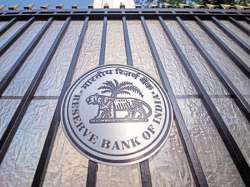RBI issues new framework to cut bad loans
The revised PCA framework is applicable to all banks, including small and foreign banks.

To resolve the problem of banks mounting non-performing assets (NPAs) or bad loans, the Reserve Bank of India (RBI) on Friday issued a new set of guidelines.
Through the notification titled Revised Prompt Corrective Action (PCA) framework for banks, the RBI said that the new set of provisions, effective from April 1, override the existing PCA framework and are based on the financials of each bank as of March 2017.
The new framework will be reviewed after three years.
Under the revised framework, if a bank crosses the third level of risk threshold (where a bank's common equity tier I capital falls below the threshold of 3.625 per cent by 3.125 per cent, or more) it will either be amalgamated or merged, or taken over by another entity.
"Breach of 'risk threshold 3' of CET1 (common equity tier 1) by a bank would identify it as a likely candidate for resolution through tools like amalgamation, reconstruction, winding up etc," the notification said.
The apex bank also said that in case a "bank defaults in meeting the obligations to its depositors, possible resolution processes may be resorted to without reference to the PCA matrix".
"A bank will be placed under PCA framework based on the audited annual financial results and RBI's supervisory assessment. However, RBI may impose PCA on any bank during the course of a year, including migration from one threshold to another, in case the circumstances so warrant."
The revised PCA framework is applicable to all banks, including small and foreign banks.
The new framework also places capital, asset quality and profitability as the key areas for monitoring. Besides, the over-riding indicators tracking capital, asset quality and profitability will be capital to risk assets ratio (CRAR), CET1 ratio, met NPA ratio and return on assets, respectively, the notification said.
A bank's "leverage will be monitored additionally as part of the PCA framework and any breach of any risk threshold will result in invocation of PCA," it added.
If a bank breaches the risk levels or leverage levels, RBI said "promoters/owners/parent in the case of foreign banks" will have to bring in capital to meet the special supervisory requirement.
Breach of risk threshold 2 will attract restrictions on branch expansion, as well as domestic and overseas higher provisions, as part of the coverage regime, RBI said.
Breach of risk threshold 3 will invite mandatory actions of threshold 1 and 2, along with restrictions on management compensation and directors' fees and any other corrective actions such as removal of officials and supersession or suppression of the board.
At its first monetary policy review of the fiscal on April 6, the RBI said it would come out with a revised PCA framework.
The NPAs of state-run banks at the end of last September rose to Rs 6.3 lakh crore (almost $100 billion), as compared to Rs 5.5 lakh crore at the end of June 2016.
With IANS Inputs